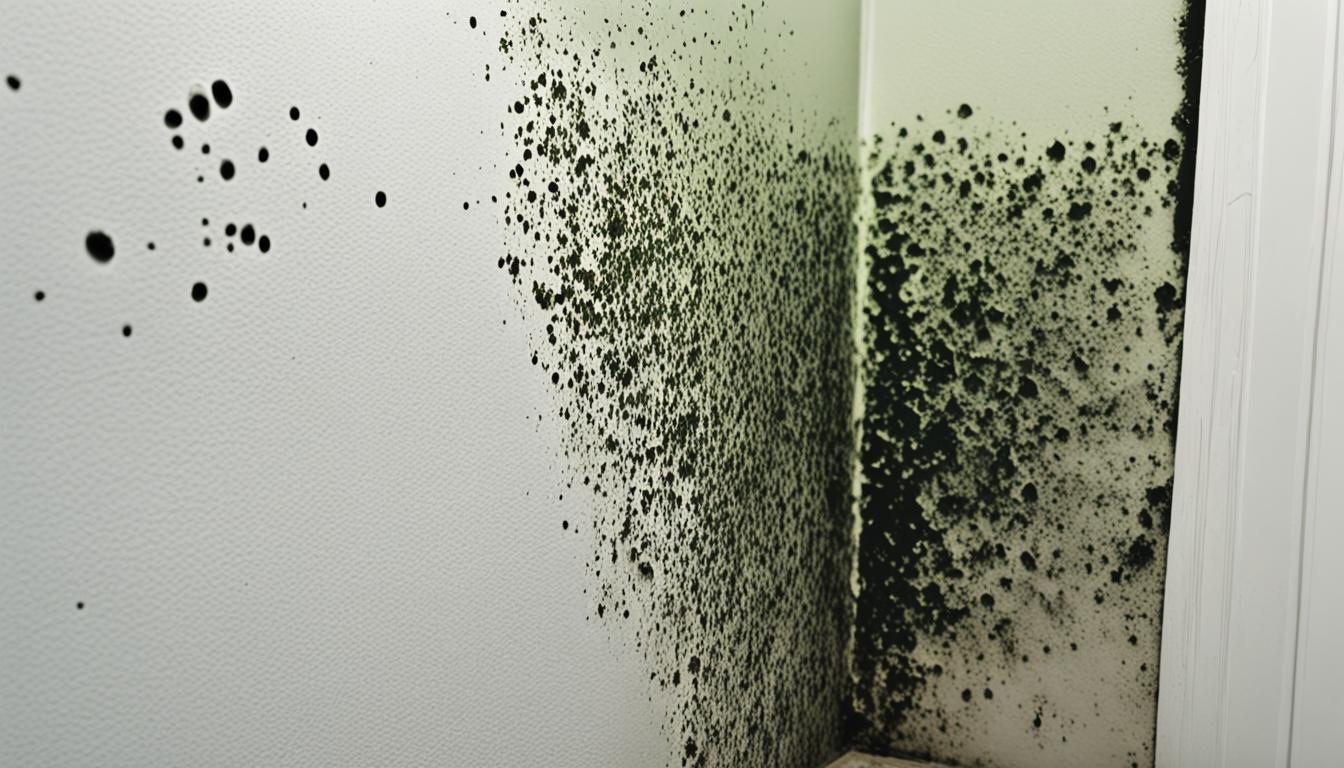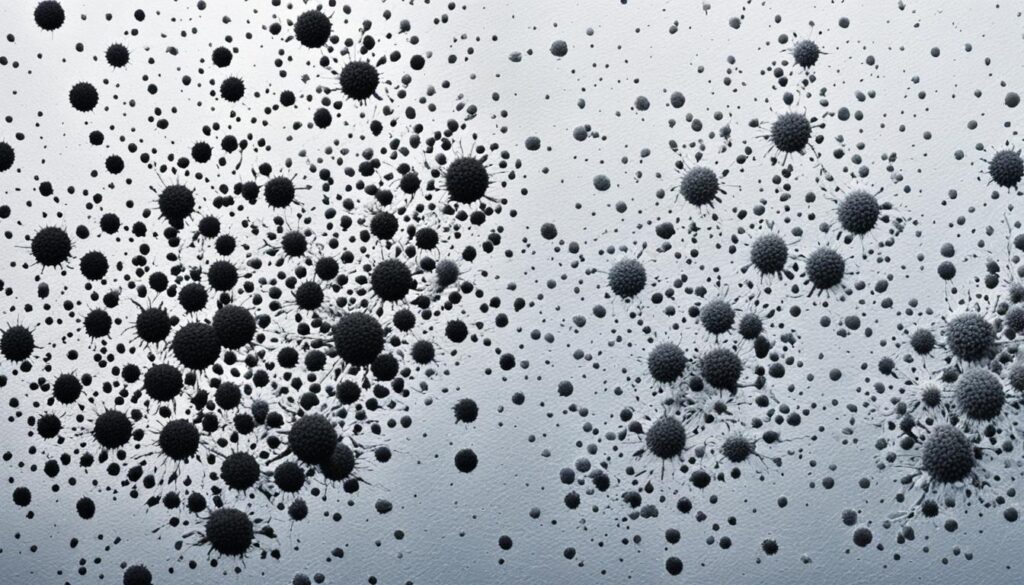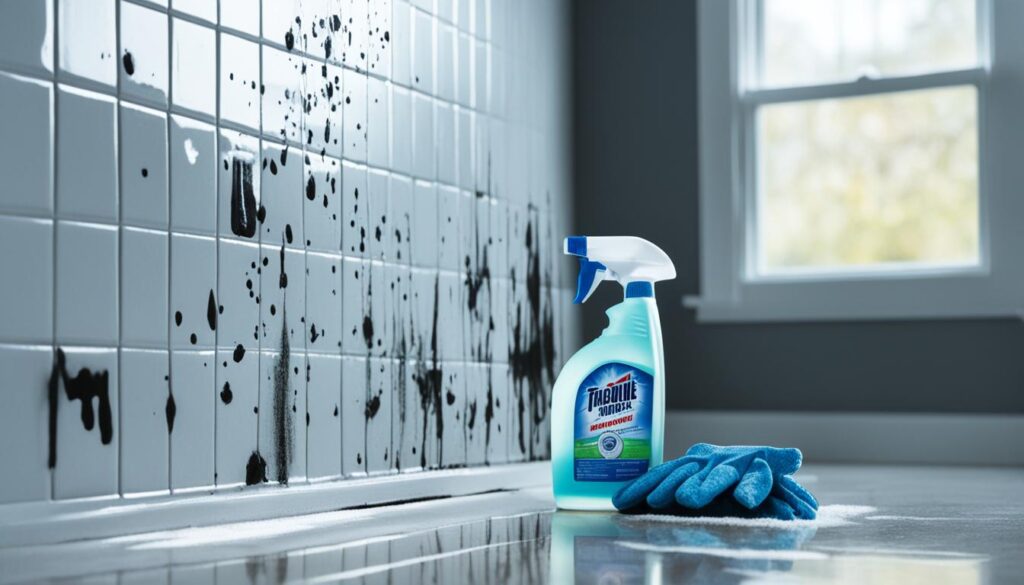
Black Mold vs Mildew: Know the Key Differences
Welcome to our informative guide on the key differences between black mold and mildew. Understanding these distinctions is crucial to protecting your home and your health. Whether you are dealing with mold or mildew, it’s important to identify them correctly and take appropriate steps for removal. In this article, we will discuss the identification, health risks, and effective removal methods for both black mold and mildew.
Key Takeaways:
- Black mold and mildew have distinct differences in color, texture, and odor.
- Exposure to black mold and mildew can lead to respiratory problems, allergies, and other health concerns.
- Removing black mold and mildew requires proper cleaning methods and safety precautions.
- Early identification and removal of black mold and mildew are essential for maintaining a safe living environment.
- For professional assistance, contact Fix Mold Miami at 305-465-6653 for a mold assessment.
Identifying Black Mold and Mildew.
When it comes to dealing with mold and mildew, identification is key. In this section, we will explore the distinct characteristics of black mold and mildew. By understanding their differences, you can effectively address these issues and protect your home and health.
Physical Characteristics:
Black Mold:
- Color: Black or dark green
- Texture: Slimy or fuzzy
- Odor: Musty and earthy
Mildew:
- Color: Gray, white, or yellow
- Texture: Powdery or downy
- Odor: Damp and unpleasant
By paying attention to these physical characteristics, you can distinguish between black mold and mildew. This knowledge empowers you to take appropriate steps to address the issue and prevent further damage.
“Identifying and addressing black mold and mildew early is crucial for maintaining a safe and healthy living environment.”
Importance of Identifying Black Mold and Mildew
Identifying black mold and mildew is important for several reasons:
- Health Risks: Black mold and certain types of mildew can pose serious health risks, particularly for individuals with respiratory conditions or weakened immune systems.
- Effective Remediation: Different types of mold and mildew require specific treatment methods. By accurately identifying the issue, you can choose the appropriate approach for effective removal.
- Preventing Spreading: Identifying mold and mildew early on enables you to take prompt action and prevent their spread to other areas of your home.
Now that you have a better understanding of how to identify black mold and mildew, you can confidently tackle these issues and create a safer living environment for yourself and your loved ones.
Comparison of Black Mold and Mildew
| Characteristics | Black Mold | Mildew |
|---|---|---|
| Color | Black or dark green | Gray, white, or yellow |
| Texture | Slimy or fuzzy | Powdery or downy |
| Odor | Musty and earthy | Damp and unpleasant |
Health Risks and Effects of Black Mold and Mildew.
Exposure to black mold and mildew can pose significant health risks and have adverse effects on individuals. It is crucial to understand the potential hazards associated with these fungi to ensure the safety and well-being of both your home and your family.
Respiratory Problems and Allergies
One of the primary health risks related to black mold and mildew is the development of respiratory problems. When exposed to spores released by these fungi, individuals may experience symptoms such as coughing, wheezing, and difficulty breathing. Prolonged exposure could aggravate existing respiratory conditions, such as asthma, and lead to severe respiratory infections.
In addition to respiratory problems, black mold and mildew can trigger allergies in susceptible individuals. The allergenic properties of these fungi can cause allergic reactions, including sneezing, nasal congestion, itching, and watery eyes. These symptoms can be particularly bothersome for individuals with allergies or compromised immune systems.
Other Associated Health Concerns
Aside from respiratory problems and allergies, exposure to black mold and mildew can also contribute to various other health concerns. Some individuals may experience skin irritation and rashes upon contact with these fungi. In rare cases, toxic varieties of black mold, such as Stachybotrys chartarum, can release mycotoxins, which can lead to more severe health effects.
Furthermore, prolonged exposure to black mold and mildew can have a negative impact on overall immune system function. This weakened immune response may make individuals more susceptible to infections and other illnesses.
To mitigate these health risks and protect your well-being, it is essential to address and eliminate black mold and mildew from your living environment. Taking prompt action to remove these fungi can prevent further health complications and ensure a safer living space for you and your family.
“Exposure to black mold and mildew can lead to respiratory problems, allergies, and other health concerns. It is crucial to address and eliminate these fungi to protect your well-being and create a safer living environment.”

| Health Risks and Effects of Black Mold and Mildew | |
|---|---|
| Health Risks | Effects |
| Respiratory problems | Coughing, wheezing, difficulty breathing |
| Allergies | Sneezing, nasal congestion, itching, watery eyes |
| Skin irritation | Rashes, itching |
| Weakened immune system | Increased susceptibility to infections and illnesses |
Removing Black Mold and Mildew: Essential Tips.
Properly removing black mold and mildew from your home is crucial for maintaining a safe and healthy living environment. Here are some essential tips to help you effectively eliminate these hazardous substances:
1. Use the Right Cleaning Methods
- For small areas affected by mildew, you can mix a solution of equal parts water and white vinegar. Apply the solution to the affected area and scrub gently with a brush. Rinse with clean water and dry thoroughly.
- For larger infestations or stubborn black mold, use a commercial mold and mildew cleaner. Follow the instructions on the product label carefully and ensure proper ventilation during the cleaning process.
2. Prioritize Safety Precautions
When dealing with black mold and mildew, it’s important to protect yourself and your family. Follow these safety precautions:
- Wear protective clothing such as gloves, goggles, and a mask to avoid direct contact with the mold and inhaling harmful spores.
- Work in a well-ventilated area to prevent the buildup of potentially toxic fumes.
- Keep children, pets, and individuals with respiratory conditions away from the affected areas during the cleaning process.
3. Consider Professional Help
In some cases, the extent of the mold or mildew infestation may require professional assistance. If you’re unable to effectively remove the black mold or mildew yourself, or if the affected area is large, it’s advisable to seek the expertise of a professional mold remediation company. They have the necessary equipment and knowledge to safely remove the mold and ensure that it doesn’t return.
| Removing Black Mold | Removing Mildew |
|---|---|
| Use a mixture of water and white vinegar. | Use a mixture of water and white vinegar. |
| Scrub gently with a brush. | Scrub gently with a brush. |
| Rinse with clean water and dry thoroughly. | Rinse with clean water and dry thoroughly. |
| If necessary, use a commercial mold and mildew cleaner. | If necessary, use a commercial mold and mildew cleaner. |
Remember, proper removal of black mold and mildew is essential for protecting the health of your household. Take the necessary precautions and seek professional help when needed to ensure a thorough and effective cleanup.

Conclusion
In conclusion, understanding the differences between black mold and mildew is crucial for protecting your home and health. Black mold and mildew may appear similar, but they have distinct characteristics and require different approaches for identification and removal.
By identifying these issues early, you can prevent them from spreading and causing further damage to your home. Promptly addressing mold and mildew infestations is essential to maintain a safe and healthy living environment for you and your family.
If you suspect the presence of black mold or mildew in your home and need professional assistance, contact Fix Mold Miami at 305-465-6653 for a professional mold assessment. Our experienced team can provide expert guidance and help you eliminate these harmful substances from your property.




